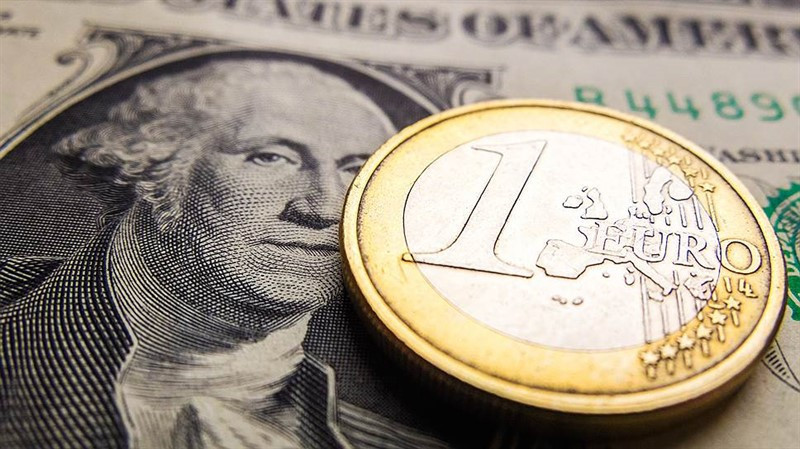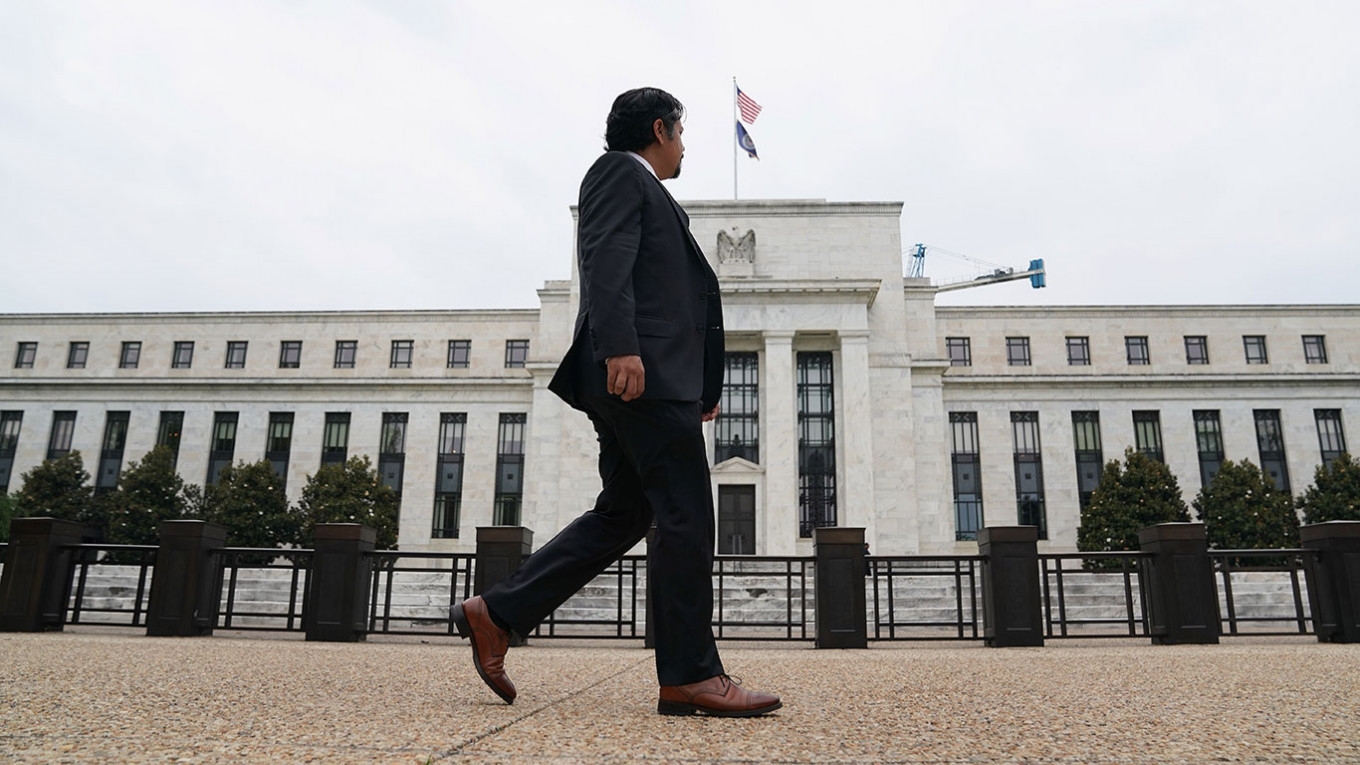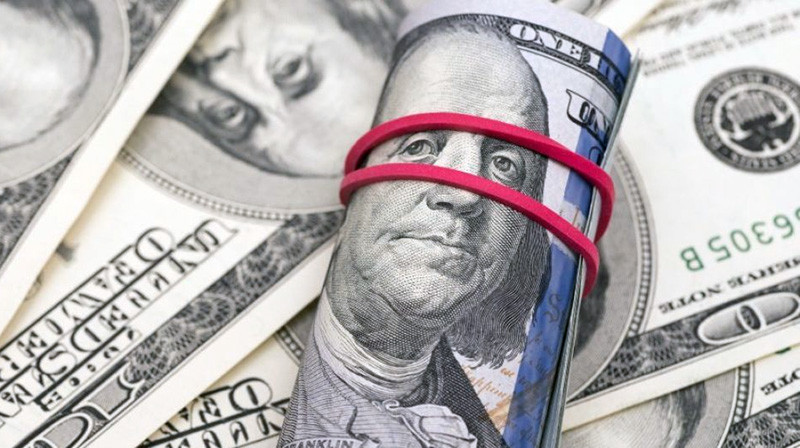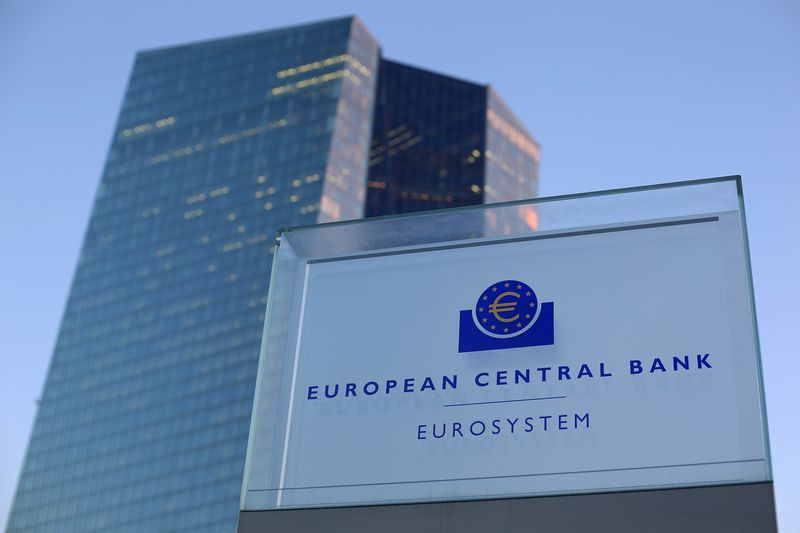
The dollar broke a three-day losing streak on Thursday, posting its strongest gain since late September.
The USD index gained more than 0.9%, finishing around 104.20 points.
Meanwhile, the EUR/USD lost about 60 pips on the day and ended Thursday's session in negative territory, just below 1.0630.
The flight to safe havens, which increased during the US trading hours, made it possible for the dollar to outperform its main competitors.
Key Wall Street indicators closed Thursday in sharp declines. Specifically, the S&P 500 fell 2.49% to 3,895.75 points. The index finished at its lowest level since November 9.
Market participants continued to win back the results of the December FOMC meeting.
The Federal Reserve raised interest rates by 50 basis points.
As expected, the central bank slowed the pace of rate hikes after four consecutive steps by 75 bps.
However, Fed Chairman Jerome Powell warned that recent signs of slowing inflation were not enough to convince the Fed that the battle against rising prices had been won.
The U.S. central bank is forecasting a continuation of rate hikes to above 5% in 2023, a level not seen since the sharp economic downturn in 2007.
Investors were also assessing the U.S. data released on Thursday, which showed a larger-than-expected decline in retail sales as well as an unexpected drop in industrial production in November.
Retail sales in the country decreased by 0.6% in November compared to the previous month. This is the most significant drop since the beginning of the year. Analysts had forecasted a decrease by 0.2%.
Industrial production in the US declined by 0.2% in November compared to the previous month, while experts expected growth of 0.1%.
The macro data on the United States that did not meet expectations strengthened fears that the Fed's tight monetary policy could already begin to exert downward pressure on the national economy.

The Fed's updated forecasts reflect lower estimates of U.S. GDP and higher estimates of inflation and unemployment in 2023.
The outlook for the U.S. economy's growth rate next year is 0.5%, compared with September's estimate of 1.2%.
Unemployment is expected to rise to 4.6% by the end of 2023, where it will remain through 2024.
According to experts, such an increase in the unemployment rate, which FOMC officials forecast, has never been seen without a recession in the economy.
Powell hinted that the U.S. central bank does not intend to start cutting rates before 2024.
Apparently, the Fed is on track to slow down economic activity in order to return inflation to the target 2% as soon as possible.
Powell's comments pushed key Wall Street indexes lower on Wednesday and Thursday.
"Forget the Santa rally ... the Fed looks more like the Grinch this Christmas," said John Leiper, CIO of Titan Asset Management.
U.S. stocks have rallied significantly since hitting a one-year low in mid-October as signs of lower inflation sparked optimism that the end of the Fed's rate hike path may be on the horizon. But that rally all but waned in December.
A well-known saying in financial circles is: don't fight the Fed.
However, the money market has largely ignored the Fed's recent signals and continues to expect a rate cut of more than 50 bps next year.
"The hawks may have come out to play, but markets continue to disobey," said Investec's Ellie Henderson, who along with Zentner at Morgan Stanley, expects the Fed to raise rates by only 25 bps in February before cutting in the fourth quarter.

"The market is calling the Fed's bluff. Powell and co. can harp on a higher terminal and the need to keep it high, but the market is focused on the next easing cycle," TD Securities analysts reported.
FOMC officials raised their 2023 inflation forecast to 3.5%, and the projection of the target federal funds rate jumped to 5.1% in 2023.
However, the money market does not believe the hawkish rhetoric of the Fed, which insists that rates will continue to rise and remain high for a long time.
In 2021, the Fed tried to convince investors of the temporary nature of the price surge and eventually made a mistake, and now, according to traders, the central bank is going to the other extreme.
Since inflation in the United States, from the market's point of view, is clearly declining and the incoming macro data from America does not look too "hot" either, it is not hard to understand why investors question the Fed's hawkish attitude.
As slowing U.S. inflation has heightened expectations of an imminent end to the Fed's tightening cycle, the greenback has retreated nearly 8% from its 20-year high in September.
"The dollar should weaken significantly in the next 6 to 12 months... but it's probably not going to be a one-way street," said Dominic Bunning, head of European FX research at HSBC.
"I think there is still room for this choppiness because it's an uneasy bullishness around risk appetite, it's an uneasy bullishness on risk currencies."
The velocity of the USD's rise has been driven by the pace and size of interest rate increases, ANZ Bank economists said.
"We are approaching the end of US dollar dominance. We think the USD's peak was set when the DXY touched 114 in September after rising over 20% since January. The USD's exceptionalism premium has diminished on rising fears of a US recession. The energy and political risk premiums in Europe and the UK have also waned" they said.

"In the short term, there is scope for USD consolidation. We expect it to receive safe haven attention due to the rising fear of recessions , and there is also room for hawkish surprises from the Fed that are not currently reflected in the price." said ANZ Bank.
The dollar fluctuated around 104 points on Friday. Despite Thursday's rebound, the greenback has been losing about 0.5% since the beginning of the week.
"In the short term we have a situation in which the market wants to sell dollars, not withstanding yesterday's price action, but as we get into the new year we think that could reverse on account of the global growth slowdown" analysts at RBC Capital Markets said.
The US dollar halted its downtrend but failed to rebound sharply after the FOMC, ING analysts said.
"A stabilisation in DXY around 103.50-104.00 in the next two sessions may be a signal the Fed has indeed curbed the dollar's bearish momentum and may allow a recovery to 105+ into Christmas." they said.
"We would like to think that this week's re-assessment of global growth can provide the defensive, high-yielding dollar with some support. Let's see whether 104.00/104.20 support can hold out short-term and indeed whether the dollar can hold out at these levels until January when seasonal trends turn more supportive" ING added.
"For the time being, then, we will stick with our bearish EUR/USD views into the New Year. However, as long as EUR/USD continues to trade and close above 1.0600/10, it is hard to say with any confidence that a short-term top is in place" the bank strategists said.
On Friday, the main currency pair is consolidating in a narrow range, changing within 50 points.
On the one hand the cautious sentiment in the markets restrains the growth of the EUR/USD.
The major Wall Street indices are trading in the red zone as the end of the interest rate hikes in the US is still unknown.
There are fears that an interest rate hike in a worsening macroeconomic environment will cause a recession. And the big question is how deep the recession will be.

S&P Global reported Friday that the composite U.S. business activity index fell to 44.6 points in December from 46.4 points recorded in November.
"Business conditions are worsening as 2022 draws to a close, with a steep fall in the PMI indicative of GDP contracting in the fourth quarter at an annualised rate of around 1.5%" S&P Global said.
Meanwhile, New York Fed President John Williams said there remains a possibility that the U.S. central bank will raise interest rates more than it currently expects next year.
On the other hand, more positive than expected economic data from Europe supported the single currency.
The S&P Global Eurozone Composite PMI increased to 48.8 in December of 2022 from 47.8 in November, beating market forecasts of 48, preliminary estimates showed. The index hit a new four-month high, but remained below the 50 mark, which separates growth from contraction, for the sixth straight month.
"While the further fall in business activity in December signals a strong possibility of recession, the survey also hints that any downturn will be milder than thought likely a few months ago. The data for the fourth quarter are consistent with GDP contracting at a quarterly rate of just less than 0.2%, and forward-looking indicators are currently boding well for the rate of decline to ease further in the first quarter" S&P Global said.
The euro is also holding its ground against its U.S. counterpart thanks to the ECB taking a more hawkish stance than the Fed, according to the market.
The U.S. central bank is expected to raise rates by 50 bps in 2023, while its European counterpart will raise rates by 100 bps.
The ECB raised interest rates by another 50 basis points, but warned that it would need significantly more hikes than previously anticipated to ensure that inflation returns to its medium-term target of 2% in time.
"That's a very hawkish 'pivot' from the ECB. Grim new forecasts and rate guidance. I think we need to contemplate rate hikes in Q2 too," says Claus Vistesen, an economist at Pantheon Macroeconomics.
The ECB also said it will start reducing its balance sheet by an average of €15 billion a month from the beginning of March 2023 until the end of the second quarter of 2023. More details will emerge in February.
The ECB outlined plans to begin quantitative tightening. Thus, the euro has still got plenty of upward momentum, in the view of Kit Juckes, Chief Global FX Strategist at Societe Generale.
"With QT coming in Europe (and remember, it was the cocktail of QE and negative rates that saw EUR/USD average 1.13 in the 5 years to 2019, down from 1.33 in the 5 years to 2014), the euro has still got plenty of upward momentum."
Nordea believes that EUR/USD is likely to reach 1.1000 within the next month.
"Our 3M forecast of EUR/USD at 0.99 seems too optimistic on behalf of the USD given how markets have changed their view on the Fed compared to the ECB lately. However, we still maintain our downside bias in EUR/USD in 3M to 6M as we see stocks taking a tumble lower on the back of higher rates than markets currently anticipate." commented Nordea.
"Overall, EUR/USD down to the 1.04 area seems more reasonable than 0.99 in the next 3M. Longer out, a successful reopening in China and a pause in rate hikes point toward a higher EUR/USD. We see EUR/USD at 1.13 by the end of 2023" they added.

Some analysts point out that the euro could end up in trouble because of the prospect that the ECB will worsen the recession in the eurozone.
Vitor Constancio, Former ECB Vice President, says the ECB's new tune is "bad news for euro area prospects. The ECB decisions, language and forecasts, point to an excessively hawkish policy that will aggravate the coming recession unnecessarily."
The ECB expects a relatively mild recession, as its forecasts for eurozone GDP growth are set at 0.5% in 2023 and 1.9% in 2024.
"This is a more optimistic estimate compared to our own forecast of eurozone GDP growth. Needless to say that with the still relatively optimistic growth outlook, the risk increases that the ECB pushes the eurozone economy further into recession with every new rate hike" said strategists at ING.
"The reduction in the ECB's balance sheet, when combined with the expected increase in bond issuance due to greater fiscal spending needs in the wake of the ongoing energy crisis, could renew upward pressure on sovereign bonds in the euro area early next year," Daniele Antonucci, chief economist at Quintet Private Bank, said.
The sell-off in the US dollar in recent weeks has lifted EUR/USD completely clear of parity. Looking ahead to the New Year, however, there are plenty of factors that could still unnerve EUR bulls, economists at Rabobank report.
"The ECB has a specific challenge given the different debt profiles within member nations and the possibility of spread widening vs. Bunds, particularly in the BTP market, once QT starts. This could trigger risk aversion and weigh on the EUR."
"Insofar as the current account surplus of the Eurozone has been eroded by expensive energy imports, the EUR is likely to be more sensitive to bad news than in previous years. While EUR bulls may be cheered in the short term by less bad recession fears for Germany, less high energy prices and a hawkish ECB, the single currency is not out of the woods. These risks could still push EUR/USD back to parity in 2023."
Scotiabank believes that the major currency pair could correct its recent gains.
"With gains having largely met our short-term technical target (we have been anticipating a move up to the 1.0650-1.0750 range), some consolidation is possible, if not likely in the next few weeks. Daily oscillator signals are bullish, but stretched, and the move higher may be running out of momentum. We see short-term support at 1.0575-1.0500. Corrective risks may extend to the 1.0250-1.0450 range into Q1" they said.





















